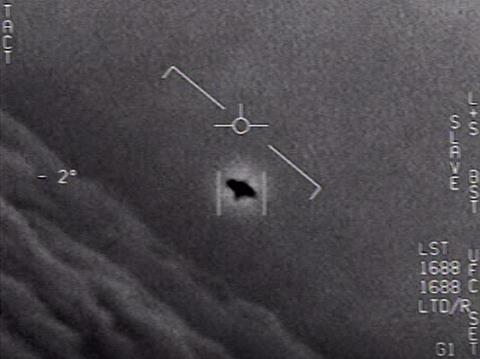US military officials are working to better understand so-called “unidentified anomalous phenomena” (UAP) in the wake of a largely inconclusive report about the nature and origin of unidentified flying objects.
“Unidentified objects in the skies, sea and space pose potential threats to safety and security, particularly for operational personnel,” Sean Kirkpatrick, director of the Pentagon’s All-domain Anomaly Resolution Office (AARO), which oversees UAP investigations, said on 16 December.
Some 144 sightings of UAP were documented in a June Pentagon report to Congress.

Since that report, defence officials substituted the term “anomalous” for “aerial” in the definition of UAP, broadening it to include objects observed in “all domains, whether in the air, ground, sea or space”.
While investigators concluded little about the origins of UAP, the report said unknown aerial objects “clearly pose a safety of flight issue”, noting American pilots reported several “near misses”. It also said UAP could pose national security risks, as investigators could not rule out that possibility that observed phenomena were some form of advanced aerospace platform developed by foreign adversaries.
Kirkpatrick says the matter “require[s] our urgent attention”.
“We’re concerned about things that may be in proximity to our bases, and things that may be in proximity to assets that we have in space,” he says. “We track those things all the time to ensure that we’re aware of what they are, and we try to characterise those immediately.”
Kirkpatrick, who holds a doctorate in physics and has for decades worked in technology development for defence and intelligence agencies, adds his office is leading the government’s effort to “better characterise, understand and attribute these objects” using the “highest scientific and analytic standards”.
That effort begins with collecting more data on UAP, including from ground-based flight radar, on-board aircraft sensors and visual reports from pilots. Kirkpatrick says the Department of Defense (DoD) is committed to improving data collection and bolstering UAP reporting and personnel training.
He says reporting can be improved by reducing backlash associated with discussing UAP sightings. Existing reports have come predominantly from US Navy aviators, who have faced scepticism and risk negative career consequences for filing official UAP reports. The Pentagon’s preliminary UAP assessment notes military pilots describe professional “disparagement” associated with observing, reporting or even discussing UAP with colleagues.
”Reputational risk may keep many observers silent, complicating scientific pursuit of the topic,” the report says. However, its adds that the stigma is lessening as UAP becomes a more-frequent topic of serious public discussion.
“The stigma associated with UAP reporting has been significantly reduced,” Kirkpatrick says. “While that’s good news, more work needs to be done.”
To accomplish that, he says the AARO is bringing in outside detection and tracking experts, and executing a “focused collection campaign” aimed at gathering data from the US military, Federal Aviation Administration, Department of Energy, United States Coast Guard and other agencies.
“More data will help build a more-complete picture and support the resolution of anomaly,” Kirkpatrick says.
The Pentagon’s June report notes most UAPs “probably do represent physical objects”. Some 80 reports involved observation from “multiple” sensors, including radar, infrared and electro-optical equipment and weapon seekers. Some were observed by sight.
Investigators acknowledge that 18 incidents involved “unusual” movement patterns or exhibited “unusual flight characteristics” – including remaining stationary in winds aloft, moving against wind, abrupt manoeuvring, and high-speed motion with no discernible means of propulsion.
Kirkpatrick says the AARO is working with other defence and intelligence programmes to determine whether reported UAPs might be experimental aircraft developed by the USA or allies – “blue” aircraft, in military parlance.
“We are setting up very clear mechanisms… to de-conflict any observations that come in with blue activity, to ensure that we weed those out, and we can identify those fairly early on,” he notes.
Other possibilities include that reported UAPs are actually visual illusions, or perhaps generated by systems intended to confuse military sensors. Kirkpatrick says investigators will examine those possibilities.
Ron Moultrie, undersecretary of defence for intelligence and security, notes proliferation of commercially available drones flown by civilian operators could offer an explanation.
“There are a lot more civilian drones that are being flown today, and other things that have been put up in the skies, and some of these things almost collide with planes,” Moultrie says. “We see that on a regular basis.”
He thinks “a number of these activities… can be characterised as non-adversarial systems”, suggesting balloons and unmanned air vehicles as possibilities.
However, Kirkpatrick says the “interesting flight dynamics” observed justify further exploration, regardless of their source.
The US Director of National Intelligence, with participation from the AARO, plans to release its next UAP report in the coming months, which Kirkpatrick says will include “several hundred” incidents not included in the June analysis.


























